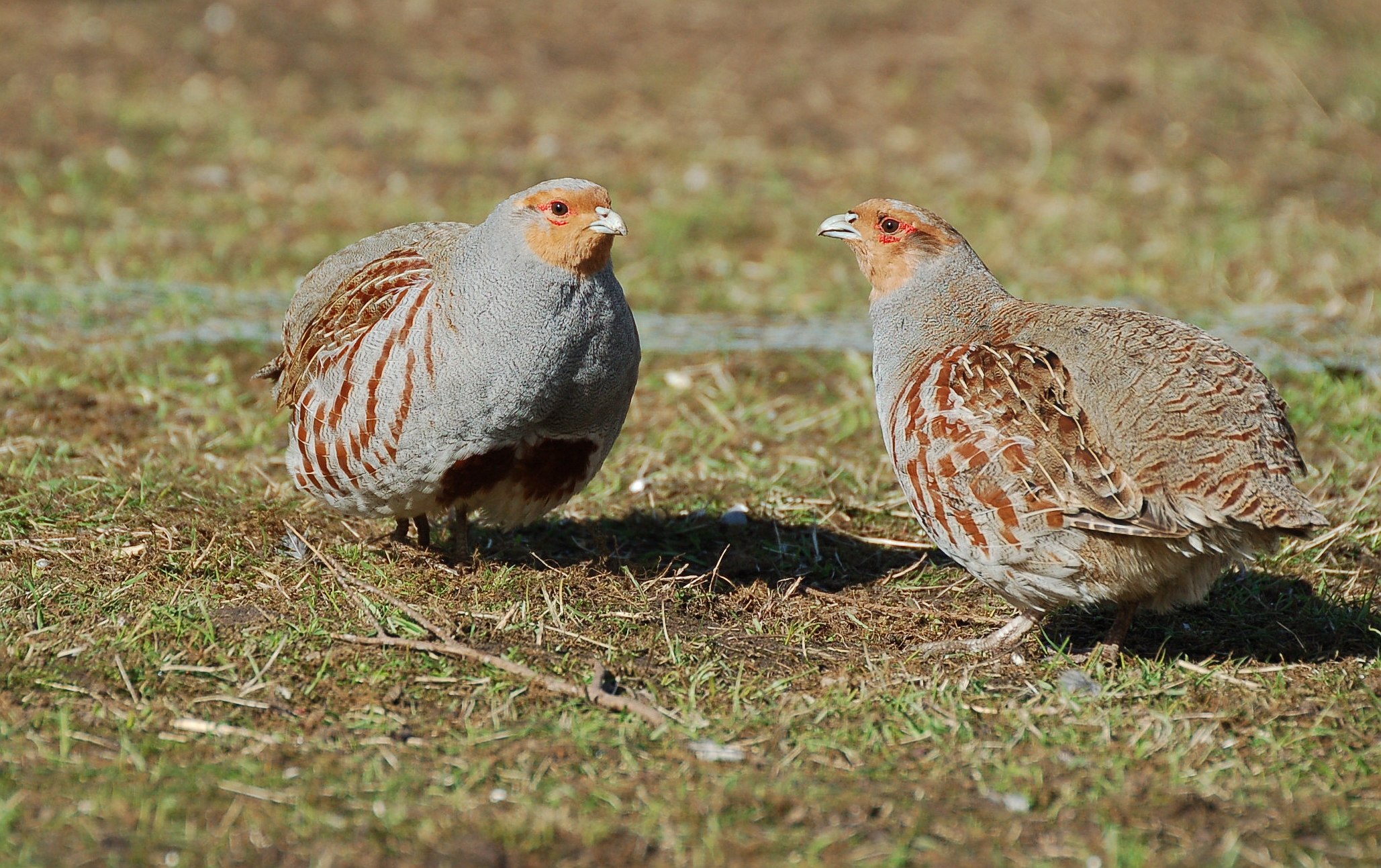Perdix perdix
Habitat
Grey Partridge prefer areas of open farmland. They tend to be absent from areas dominated by improved grasslands (fertilized), preferring a mixed farming or arable landscape. They will use field margins, arable crops and grass leys for cover and feeding habitat.
Food
Their food source includes grass and cereal shoots, seeds, knotgrass, black bindweed, common hemp nettle and chickweed. Chicks require insects for the first two weeks of life; sawfly larvae are particularly favoured. In winter families of birds will form coveys on stubbles and root crops.
Nesting
They will nest in well hidden hedge bottoms, grass banks, game cover, cereals and nettle beds. Dead tussocky grass left over from previous years is particularly favoured as nesting cover. Eggs will be laid from April onwards.
Song/Call
“Prri-prri-prri”/“rick-rick-rick”- Short sharp call when rising, very abrubt and clipped.
Beneficial Management
- Aim to provide a network of field margins with varying lengths of grass to create nesting a feeding opportunities.
- Consider establishing areas of wild bird seed cover and/or pollen and nectar mixes to provide a year round food supply.
- Leaving over winter stubbles and conservation headlands will create valuable feeding areas.
- Provide insect rich areas for chicks to forage – such as Conservation Headlands.
- Provide late winter and early spring supplementary feeding by scattering grain or provide feed hoppers.
- Consider Fox and Corvid control during the breeding season.
Download and print

